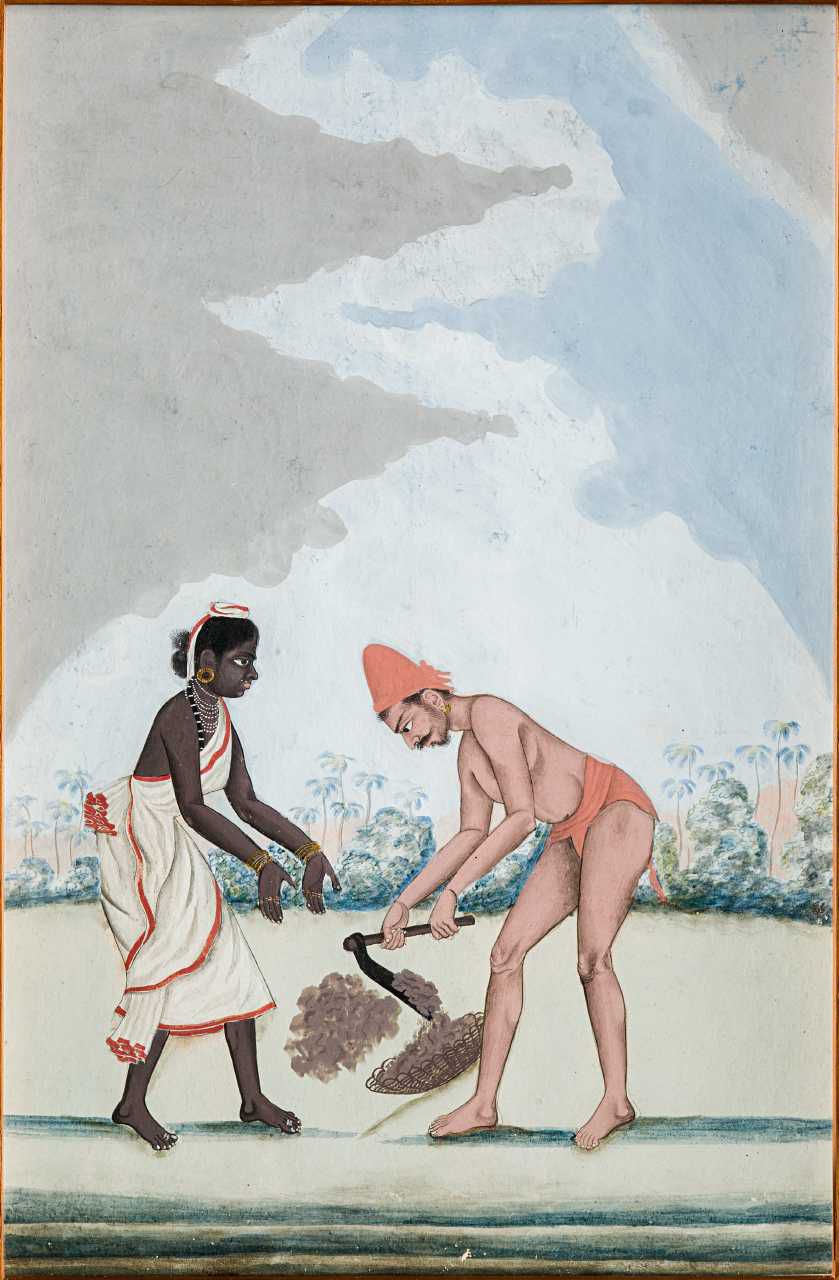
Peasants tilling the land and blacksmiths working, ca. 1800
Peasants tilling the land and blacksmiths working. One of a series of Indian miniature paintings depicting a wide range of different occupations, trades and castes in the late eighteenth century. The paintings are in the style known as company paintings, a unique artistic tradition which artists at the royal court in Thanjavur played quite an impressive role in developing. The paintings portray local people, plants, birds, festivals and working scenes and were made to be bought as souvenirs by civil servants employed by the European trading companies. Particularly popular were series with motifs of different castes and occupations depicting husband and wife together with an emphasis on typical tools and differences in costume. These paintings of everyday Indian life may of course be interpreted as a reflection of European attempts to understand the culturally complex Indian society through classification and categorisation. However, being naturalistic yet rather exotic depictions, they may also be seen as an expression of a desire in royal Indian patrons and artists to portray India in a manner comprehensible to the Western eye and present local folklife in an aesthetic way.
This company paintings was collected by Reverend Niels Fuglsang who served the Danish Lutheran congregation at the Zion Church in Tranquebar between 1792 and 1802. During his stay he collected around 150 artefacts such as religious items, handwritten scripts and around 70 company paintings. After his death in 1832 the collection was given to the Danish king in return for a yearly pension to Fuglsang’s daughters. Later the collections of scripts and other items were donated to the Royal Danish Library and to the Ethnographical Collection, now part of the National Museum of Denmark. The painting is gouache on paper, unknown artist, around 1800.